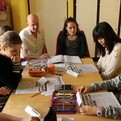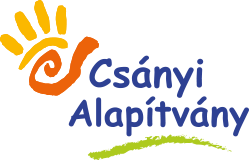
Visiting Pécs
On Friday, I arrived at the third location of my five stage tour of the Foundation’s established Community Houses. I have already visited Nagybajom and Jaszbereny during the last two weeks. During the next two weeks, I will visit Kaposvar and Szeged. This weekend, it was the turn of Pecs.
Pecs, the capital of Baranya County, is the fifth largest city in Hungary (after Budapest, Debrecen, Szeged and Miskolc). It is situated on the slopes of the Mecsek mountains, close to the Croatian border, and is 150 miles south of Budapest.
The Foundation first set up a Community House in Pecs in 2007, but moved to a larger base earlier this year so as to facilitate a fifty percent increase in the number of its members. The modern facilities are now fully operational and the fifteen children who began their new life with the Foundation during the summer are settling in well.
There is currently a volunteer from Singapore on a six week placement working in the Community House at Pecs. Yina Chua’s presence will be valuable, as it will give everyone the opportunity to practice their English and learn more about an alternative culture. Yina partnered me during my sessions on Saturday. She was a great help and I am sure that she will return to Singapore with some interesting and worthwhile experiences from her stay in Central Europe.
I began by holding conversations in groups of one, two or three with the older children of the Community House, who are now around sixteen years old. I first met these members during a one week camp in Sarospatak during the summer of 2010. At this time, I had only been in Hungary for three months and almost all of the children had a beginner / elementary level of English. I remember very clearly the fun that the children and I had in trying to understand one another – the communication was a mixture of sign language and broken short sentences! However, during this weekend, I was astonished many times by how their language skills have developed. Some have begun to speak English in an extremely natural way; at times they are using it in a comparable manner to that of native speakers. The precision by which they are able to express their thoughts and personalities through the language has developed notably. With these more advanced students, I stepped away from traditional topics of an English class and instead explored more complex issues with them, such as Economics, Politics, History, and Geography. One student was particularly interested in Electronic Engineering, so I spoke about that with him.
I was particularly surprised by one girl. I clearly remember the conversations that I had with her during the 2010 camp. At that time, she spoke practically no English and appeared very frustrated at her attempts to improve. She is an introverted girl and, at the time, it was difficult to assess how her future path with the language might evolve. Anyway, on Saturday she was a delight to speak with. Her vocabulary was rich, her grammar was sophisticated and accurate, and her fluency was music to my ears. Her persistence with learning demands respect and admiration. This determination to succeed, even in the face of adversity, is a common trait across the members of the Foundation.
After my time with the older members of the Community House, I participated in a language lesson with its newest members, who were aged between nine and eleven years old. The energy and enthusiasm of everyone in the room was infectious; they were helping one another and were the embodiment of the Foundation’s ethos of community.
David Holmes.


